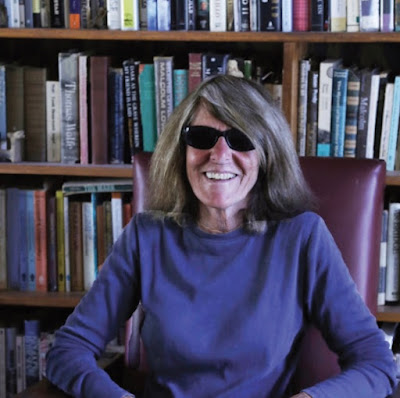Thursday, November 18, 2021
Our final story session
Tonight is the eighth and final session in our Swarthmore Short Story class. We will miss it, and we aleady have decided that we should continue to resd short stories aloud after the course is over. But it won't be the same with no Peter Schmidt and no class members, with their insightful questions and comments. We are reading three stories for tonight: Joy Williams, The Visiting Privilege; George Saunders Ghoul; and Yxta Maya Murray, Zero Tolerance, from The World Doesn't Work That Way, But it Could. So far I have read the Williams story and about 2/3 of the Saunders story aloud to Ellen while she has been making pie crusts for a pie sale this weekend at the Guilford Church (she is right now delivering those crusts to the church, so I am on a little break from reading aloud). This is a very efficient use of time. We also have four papers written by students in Peter's course on this same subject taught earlier this year. They are analysing the stories by Williams and Saunders and Peter got the students' permissiom to share them with us. I read one of those papers aloud earlier, and it was good. ********************************************************
I found these photos of the three authors online:
Joy Williams
George Saunders
Yxta Murray*************************************************
These are all contemporary authors, and these stories are all recently published: Williams in 2015; Saunders in 2019 and Murray in 2020. *********************************************************
LATER
I was able to read aloud all three stories and three of the students' papers before the class began. It was a good class session but I felt the class was not as engaged as other sessions. I wonder if older people don't connect with these contemporary storiess as much. Peter said his young undergrads really connected with these stories. The three stories each created a world in which horrors occured: Williams' story was in the world of a mental health facility, Pond House, where a middle-aged woman was being treated for depression; Saunders story was set in a dystopian future where an underground community existed in a Disney-world kind of amusement park with severe rules and where an image of "Above" was like a hoped-for Heaven; Murray's story takes place in a contemporary immigrant detention facility. In all of these worlds, the line between our reality and the fictional fantasy was more than blurred. In fact, I went so far as to say that these stories, and the course in general, had led me to feel not only that "truth is stranger than fiction," but that "the real world is more horrible than fiction." Each of these stories made us powerfullly aware of horrors in our world that we would like to deny or ignore. No more! The Saunders story had a glimmer of hope (I thought) that recognizing and speaking the truth might just make a difference.
Thank you, Peter Schmidt, for a great course!
Peter Schmidt, Prof. of English at Swarthmore College
Subscribe to:
Post Comments (Atom)





No comments:
Post a Comment